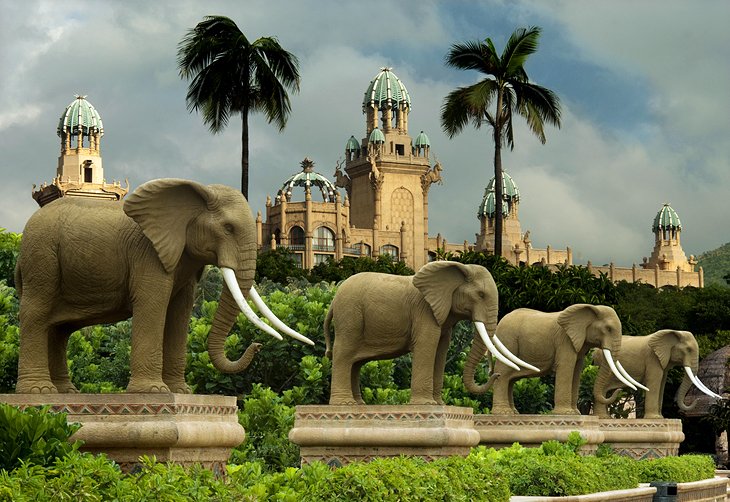The Only Guide for Johannesburg North Attractions
The Only Guide for Johannesburg North Attractions
Blog Article
The Ultimate Guide To Johannesburg North Attractions
Table of ContentsThe smart Trick of Johannesburg North Attractions That Nobody is DiscussingThe Best Strategy To Use For Johannesburg North AttractionsSome Known Incorrect Statements About Johannesburg North Attractions 8 Easy Facts About Johannesburg North Attractions ExplainedRumored Buzz on Johannesburg North AttractionsSome Of Johannesburg North Attractions
The city grew on the edge of the Witwatersrand Main Coral reef, a below ground stratum of gold-bearing quartz-silica corporation that arcs for hundreds of miles beneath the Highveld - Johannesburg North attractions. Most of the gold mines in the city discontinued operation in the 1970s, however in its day the Witwatersrand gold sector accounted for even more than 40 percent of the globe's annual gold manufacturing.Johannesburg has a warm environment. Summer season temperatures average concerning 75 F (24 C); winter season temperatures average about 55 F (13 C) and only sometimes dip listed below freezing. The city enjoys about eight hours of sunshine per day in both winter months and summertime. Rain averages about 28 inches (700 millimetres) per annum, yet the complete differs substantially from year to year.
What rainfall the city gets drops virtually specifically in the summertime, often in amazing late-afternoon electrical tornados. Air contamination poses a significant trouble, particularly in the winter season, when thermal inversions hamper the westward circulation of air from the Indian Ocean. Pollution is most extreme in the densely settled Black towns on the city's periphery, where several citizens still count on coal for fuel.

Our Johannesburg North Attractions Diaries
The balance of the city is occupied by whites. Accommodation differs in personality and high quality.
Physical development, although rather limited by transport, proceeded quickly as immigration to South Africa, and Johannesburg in specific, increased drastically.
Many inadequate residential areas were mixed, with bad blacks and whites living together, although the well-off residential areas were typically scheduled for whites.
The previous system of eleven phoned number regions was reorganised in 2006. Marshalltown, as seen from the top of the Carlton Centre. The M1 and M2 run behind the buildings, and the southern residential areas extend past the highway border. The internal city of Johannesburg is situated within the city's Region F. The estimated population of the region is 200,000, [] but the variety of people staying in the central city on a casual basis is unknown, as many are illegal immigrants. A lot of higher-income citizens and white individuals have relocated to the northern residential areas and have actually been replaced by lower-income black people. The joblessness, education, and age accounts of the location are all unknown, due to the problem of obtaining trustworthy details about the location.
Some Known Questions About Johannesburg North Attractions.
Yeoville and Bellevue have a mix of home buildings and single domestic units on tiny great deals. The region is located on a mountainous divide that ranges from eastern to west. The most conspicuous geographical feature is Observatory Ridge, which is called for the huge observatory located on it. The leisure spaces are no more utilized, because of security problems.

Johannesburg Stadium, a training school for both the Golden Lions and Orlando Pirates, is adjacent. The eastern suburbs of Johannesburg are situated in the city's 7th [] and 9th [] areas. The area is additionally functionally integrated with East Rand border communities beyond the official border of their website Johannesburg, such as Bedfordview and Edenvale (both part of Ekurhuleni Metropolitan Municipality).
Johannesburg North Attractions Can Be Fun For Anyone
The eastern suburban areas are some of the earliest locations Source of Johannesburg, there are huge areas of Jewish and various other European histories, the majority of the populace is English talking. There are 3 golf courses as well as a number of protected ridges with viewsites.
The location is mainly made up of old "matchbox" residences, or four-room houses built by the federal government, that were constructed to offer low-cost holiday accommodation for black employees throughout apartheid. Soweto is an abbreviation, meaning "South Western Townships". Street after street in this field is lined with matchboxes; nonetheless, there are a couple of smaller sized locations where flourishing Sowetans have actually developed homes that are extra comparable in stature with those in even more wealthy residential areas.
Hostels are an additional popular physical attribute of Soweto. Originally constructed to house male migrant workers, lots of have actually been enhanced as residences for couples and family members. The N1 Western Bypass skirts the eastern boundary of Soweto. The suburban area was not historically permitted to develop work centres within the location, so nearly all of its citizens are travelers to other parts of the city.
Not known Details About Johannesburg North Attractions
The residential locations in the north suburbs are mostly formal, with no considerable locations of casual real estate, or real estate that lacks a long-term framework. This is a well established area, there is a trend of land usage adjustment from residential to commercial, specifically along primary arterial roadways and around established nodes.
The area is well attached to roadway networks, particularly along the north-south axis formed by the M1 and N1. Roads to the east and west are less well created, as there are no freeways taking a trip in that instructions. In the direction of the north boundary of the city, the thickness of advancement reduces, leaving huge locations of untaught land around Midrand.
Johannesburg North Attractions Things To Know Before You Get This
, which is situated on a hillside ignoring the inner city and Hillbrow.
Report this page